Have you ever wondered why do dogs have wet noses? This curious trait is not just an adorable quirk; it’s actually packed with fascinating truth! Many dog owners notice their furry friends’ moist noses and might think it’s simply a sign of being healthy or just a cute feature. But have you ever stop and ask, “What’s the science behind it?” Understanding the reason for a dog’s wet nose can unveil insights into their health and behavior. The moisture helps dogs to enhance their sense of smell, allowing them to detect scents more effectively than we can ever imagine. Isn’t that amazing? Additionally, a wet nose can indicate a dog’s emotional state and overall well-being. So, whether you’re a new pet parent or a seasoned dog lover, this intriguing topic will certainly spark your curiosity. How does the weather affect your pup’s nose? And what does it mean when it’s dry? Join us as we dive deeper into the world of our canine companions and uncover the secrets behind their wet noses. You won’t want to miss this enlightening exploration!
The Science Behind Canine Noses: Why Are Dogs’ Noses Wet?
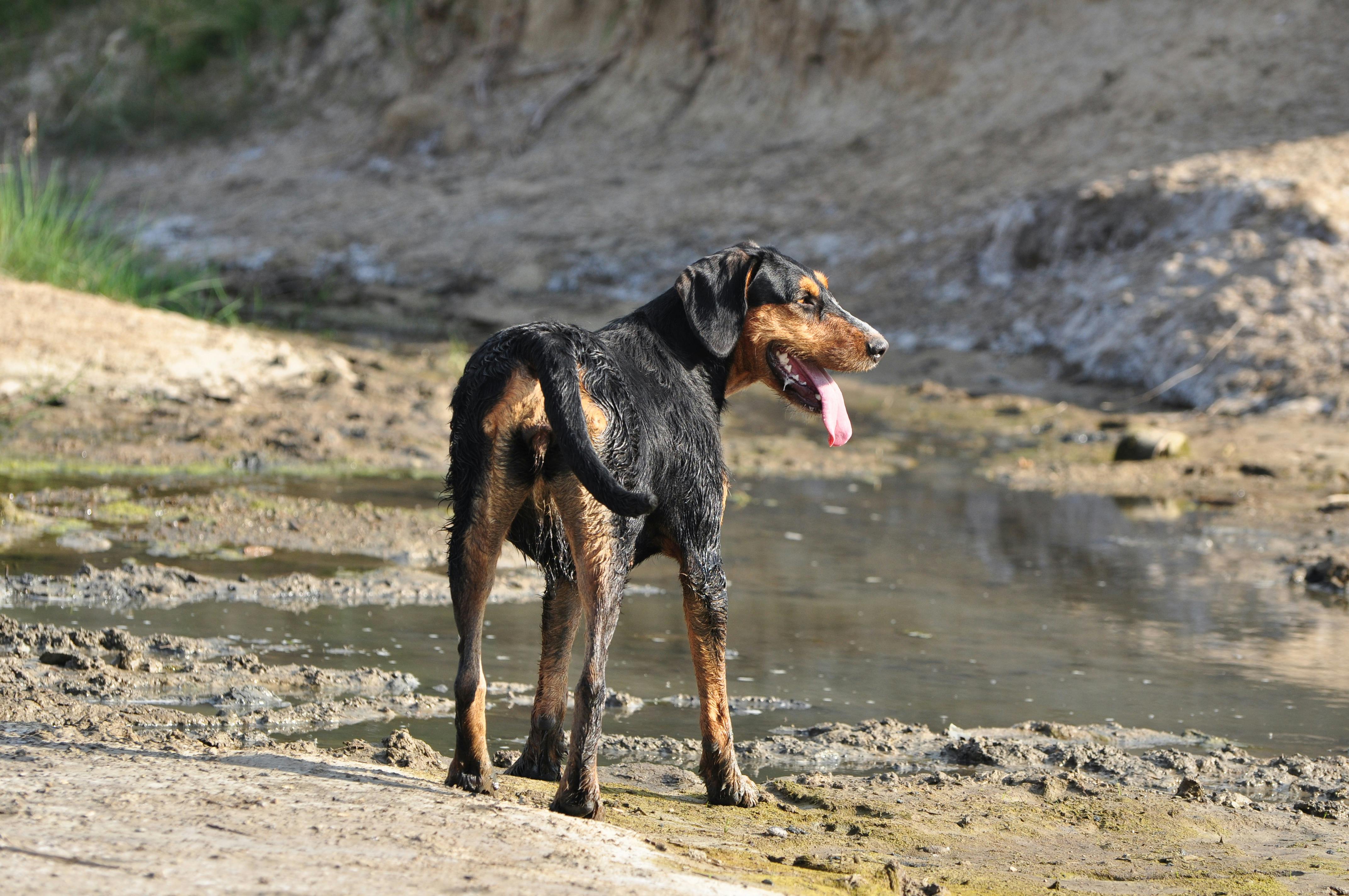
Have you ever wondered why dogs have wet noses? It’s one of those curious traits that many of us just accept as part of our furry friends. But the truth behind this unique feature is quite fascinating and involves a bit of science. While we pet our dogs, we might not consider the reasons behind their wet noses. Let’s dive into the science behind canine noses and uncover the secrets of why they stay moist.
The Anatomy of a Dog’s Nose
Dog’s noses are more than just adorable; they are complex organs that serve several critical functions. A dog’s sense of smell is incredibly sensitive, far surpassing that of humans. The moistness of their noses plays an essential role in this incredible olfactory ability. Here’s how it works:
- Nasal Mucosa: This is the lining inside a dog’s nose that produces mucus. The mucus helps trap scent particles, making it easier for dogs to identify smells.
- Moisture: Dogs’ noses are not just wet for fun; the moisture helps dissolve scent particles. When the particles dissolves in the moisture, it allows the olfactory receptors to detect scents more effectively.
- Temperature Regulation: A wet nose also helps regulate a dog’s temperature. When dogs pant, the moisture on their noses can help cool them down.
Why Are Dog Noses Wet?
So, why do dogs have wet noses? This question can be answered through several factors that contribute to their moist noses. Here are some key reasons:
- Scent Detection: As mentioned before, wet noses help with scent detection. Dogs have up to 300 million olfactory receptors, compared to about 5 million in humans. The wetness increases their ability to smell.
- Cooling Mechanism: Dogs don’t sweat like humans do; instead, they rely on their noses and panting to cool down. The moisture on their noses can evaporate, helping to lower their body temperature.
- Health Indicator: A dog’s nose can be an indicator of their health. A dry nose might suggest dehydration or illness, while a wet nose is often a sign of a healthy, happy dog.
Historical Context
Dogs have been companions to humans for thousands of years. The evolution of their noses reflects their role as hunters and trackers. Ancient breeds, like the Bloodhound, were bred specifically for their keen sense of smell. The wet nose has been an evolutionary trait that has helped dogs thrive in various environments.
Fun Facts About Dogs’ Noses
- Dogs have an extraordinary ability to differentiate between various scents. They can detect some drugs and explosives, even in minute quantities.
- The wetness of a dog’s nose can change throughout the day. You might notice it’s wetter after they drink water or after a walk.
- Some breeds, like Bulldogs, may have drier noses due to their unique facial structures.
Comparison: Dogs vs. Humans
To better understand the significance of a dog’s wet nose, let’s compare it with humans:
Humans:
- Have a limited sense of smell, primarily relying on vision.
- Sweat to cool down, and our noses do not assist in this process.
- A dry nose can be normal, but it may indicate dehydration or illness.
Dogs:
- Rely heavily on their sense of smell for communication and exploration.
- Use their wet noses to help cool down and detect scents.
- A wet nose is generally considered a sign of good health.
Practical Examples of Importance
Consider how a dog uses their nose in everyday life:
- Tracking: Search and rescue dogs use their noses to find missing persons in various terrains.
- Detection: Police dogs are trained to sniff out drugs and explosives using their superior sense of smell.
- Companionship: Your dog may nuzzle you with their wet nose, seeking your attention or affection. It’s their way of connecting with you!
Conclusion
Understanding why dogs have wet noses gives us insight into their biology and behavior. This fascinating truth reveals how these loyal companions rely on their noses for survival, communication, and connection with us. Next time you cuddle with your furry friend, take a moment to appreciate their unique traits and the science behind them. Dogs truly are remarkable creatures, and their wet noses are just one of the many reasons we love them.
7 Fascinating Reasons Your Dog’s Nose is Always Moist
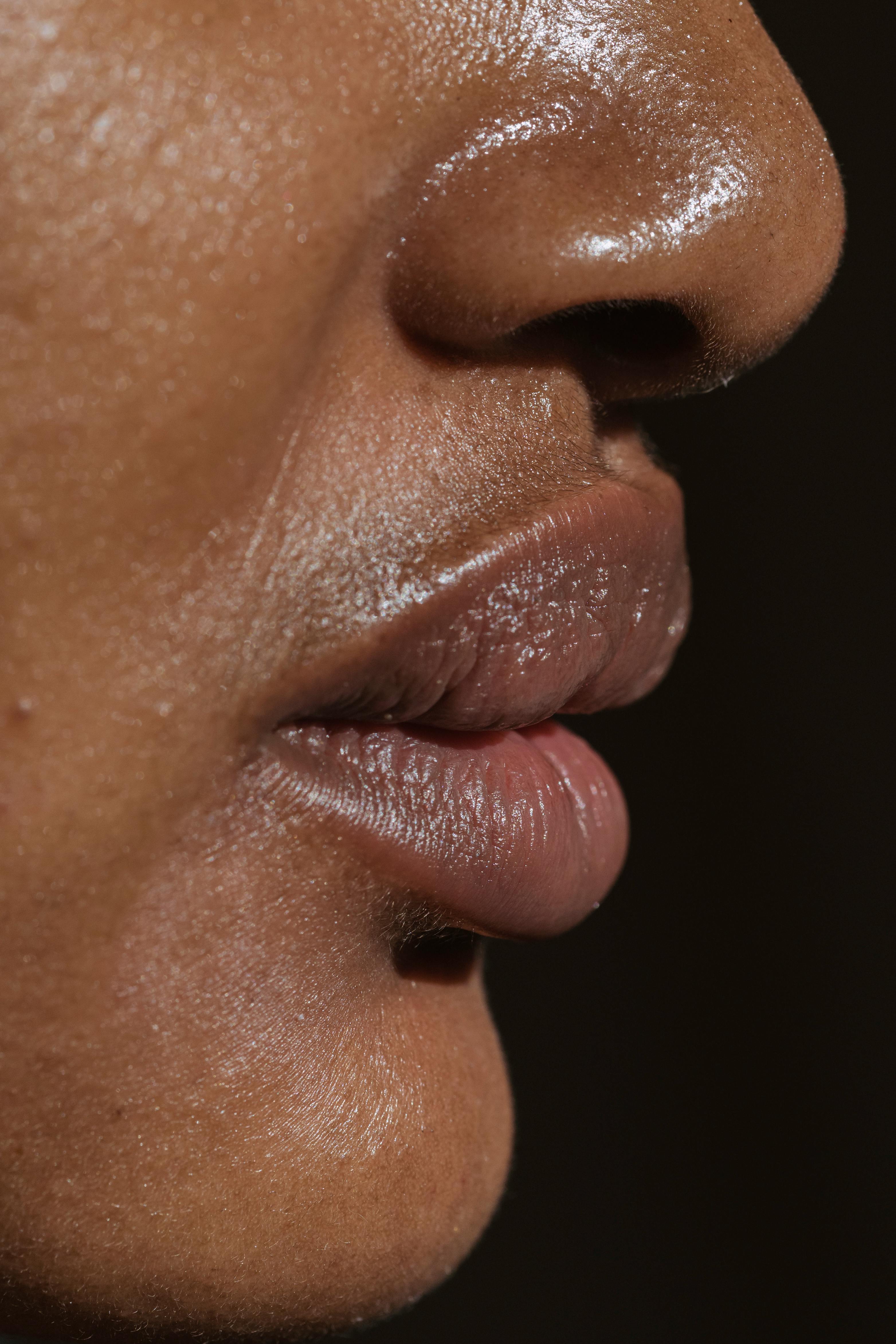
Have you ever noticed how your dog’s nose is always wet? You might think it’s just an odd quirk or maybe your pup just likes to play in the water. But really, there’s more to it than that! Let’s dive into why dogs have wet noses and uncover 7 fascinating reasons behind this curious canine characteristic. Understanding this can even help you in monitoring your dog’s health!
1. Natural Cooling Mechanism
Dogs don’t sweat like humans do. Instead, they have moist noses that help with regulating their body temperature. When they breathe, the moisture on their nose evaporates, which helps cools them down. This is especially important during hot weather or after vigorous exercise.
2. Enhanced Sense of Smell
Dogs have an incredible sense of smell — estimated to be 10,000 to 100,000 times more sensitive than humans! A wet nose plays a role in this. The moisture helps to trap scent particles from the air, which allows dogs to detect smells more effectively. So, when your dog is sniffing around, that wet nose is working hard to gather information about their surroundings.
3. Health Indicator
Believe it or not, a dog’s nose can be a good health indicator. A wet nose is usually a sign of a healthy dog. However, if the nose becomes unusually dry or cracked, it could signal dehydration or illness. Keeping an eye on your dog’s nose can help you catch potential health issues early on.
4. Sensory Function
The nose of a dog is not just a tool for smelling; it’s also a sensory organ. The moisture on the nose allows dogs to better analyze scents. This is why you might see them sniffing around after rain or near water sources. The wetness aids them in distinguishing different odors and helps them to gather important environmental information.
5. Behavioral Reasons
Sometimes, a dog’s wet nose is simply a way to express affection. When they nudge you with their nose, they may be seeking your attention or trying to show love. It’s their way of connecting with you. So that wet nose might also be a signal that your furry friend wants to play or go for a walk!
6. Environmental Factors
Dogs’ noses might be moist due to environmental conditions. Humidity, temperature, and even the type of surface they are walking on can affect how wet their nose gets. For instance, if a dog rolls in the grass or sniffs around in the park, their nose will likely pick up moisture from the grass or soil.
7. The Role of Mucus
Dogs have specialized mucus glands in their noses that produce moisture. This mucus not only helps with scent detection but also keeps their nasal passages lubricated. This is particularly important in preventing irritants or allergens from causing discomfort.
Summary of Reasons Dogs Have Wet Noses
- Natural cooling mechanism: Helps regulate body temperature.
- Enhanced sense of smell: Traps scent particles for better detection.
- Health indicator: Wetness signifies good health, dryness may indicate issues.
- Sensory function: Aids in analyzing different odors in the environment.
- Behavioral reasons: A way to express affection or seek attention.
- Environmental factors: Humidity and surfaces can influence moisture levels.
- Role of mucus: Keeps nasal passages lubricated and helps with scent detection.
Understanding why your dog’s nose is wet can help you appreciate their biology and behavior. It’s fascinating to think about how much your dog relies on their nose for communication and interaction with the world. Each time you see that wet nose, you can remember the important roles it plays in their health and happiness.
So, the next time your dog nudges you with that moist nose, take a moment to think about what it all means! Whether it’s for cooling down, sniffing out scents, or just showing some love, that wet nose is much more than just a quirky trait.
Is Your Dog’s Wet Nose a Sign of Good Health? Here’s What You Need to Know

Dogs have long been beloved companions for humans, and one curious thing about them is their wet noses. Many pet owners often wonder if a wet nose means their furry friend is healthy. So, is your dog’s wet nose a sign of good health? Here’s what you need to know about why do dogs have wet noses and the fascinating truth behind it.
Why Do Dogs Have Wet Noses?
First off, let’s dive into the science behind those moist noses. The primary reason dogs have wet noses is to help them smell better. Dogs possess a remarkable sense of smell, which is largely attributed to the specialized structure of their noses. When a dog’s nose is wet, it helps to trap scent particles in the air, enhancing their ability to detect odors. This is why you might notice your dog sniffing around more when their nose is damp.
Here are some reasons why dog noses are usually wet:
- Scent Enhancement: A wet nose captures and holds scent particles, which enhances olfactory sensitivity.
- Cooling Mechanism: Dogs don’t sweat like humans do. A wet nose can help regulate their body temperature.
- Health Indicator: A wet nose can sometimes be an indicator of good health, indicating hydration and proper function of the mucous membranes.
What Does a Wet Nose Mean?
Now, let’s talk about the common belief that a wet nose equals a healthy dog. While it’s a good sign, it ain’t the only factor. A dog can have a wet nose but still be sick. It’s important to consider other symptoms and behavior.
Here’s a snapshot of what a wet nose might mean:
- Healthy and Hydrated: Typically, a wet nose suggests your dog is well-hydrated and generally healthy.
- Illness Signs: A dry nose can indicate dehydration or health issues, but it’s not definitive. If your dog’s nose is dry and they show other symptoms, it might be time for a vet visit.
- Temperature Changes: Weather can affect nose wetness. For example, in dry winter months, you might find your dog’s nose to be drier than usual.
Comparing Wet and Dry Noses
To understand better, let’s compare wet and dry noses in dogs:
| Characteristic | Wet Nose | Dry Nose |
|---|---|---|
| Hydration | Generally indicates good hydration | May indicate dehydration or illness |
| Temperature | Often cooler than body temperature | Can be warmer than body temperature |
| Health Indicator | Usually a sign of good health | Not always a sign of illness |
| Scent Ability | Enhanced ability to smell | May not capture scents as effectively |
Common Misconceptions
People often hold misconceptions about dog noses. Here are a few of them:
Myth: A wet nose always means your dog is sick if it suddenly becomes dry.
- Truth: Changes can be due to environmental factors or temporary health issues.
Myth: A dry nose means your dog is sick.
- Truth: Not all illnesses present with a dry nose. Always look for other symptoms.
Myth: Only certain breeds have wet noses.
- Truth: Most dog breeds can have wet noses, though some may be drier than others naturally.
What to Monitor
If your dog’s nose is dry or has changed suddenly, keep an eye on other symptoms. Here are some things to watch for:
- Change in Appetite: Is your dog eating normally?
- Lethargy: Is your pup less active than usual?
- Coughing or Sneezing: Any respiratory issues?
- Vomiting or Diarrhea: Gastrointestinal problems can lead to dehydration.
When to Consult a Vet
If you notice your dog has a persistently dry nose along with any concerning symptoms, it could be time to consult with your veterinarian. Remember, your vet can provide the best insight into your dog’s health and whether any treatment is necessary.
Understanding your dog’s nose is just one part of being a responsible pet owner. Keep an eye on their overall behavior and physical condition to ensure they remain happy and healthy. A wet nose can be a good sign, but it’s always best to look at the bigger picture regarding your beloved furry friend.
Understanding Dog Physiology: The Role of a Wet Nose in Canine Senses

Dogs have always been our loyal companions, and their unique features never cease to amaze us. One of the most intriguing aspects of canine anatomy is their wet noses. You might wonder, why do dogs have wet noses? This question leads us into the fascinating world of dog physiology and their remarkable senses. Let’s dive into the details!
The Basics of a Dog’s Nose
A dog’s nose is not just a cute feature; it’s a vital part of how they interact with the world. The wetness of a dog’s nose, which many people might find endearing, serves several significant purposes. Understanding these functions helps us appreciate our furry friends even more.
- Moisture Regulation: The wetness of a dog’s nose helps in regulating temperature. When dogs pant, the moisture evaporates and cools them down.
- Enhanced Smell: A wet nose can capture scent particles better than a dry one. This is because moisture helps to dissolve the scent, making it easier for dogs to detect and identify different smells.
- Health Indicator: The condition of a dog’s nose can indicate their health. A dry nose may suggest dehydration or illness, while a wet, cool nose often signifies a healthy dog.
The Science Behind the Wet Nose
Dogs have a highly developed sense of smell, which is significantly more acute than that of humans. This is attributed to the structure of their noses. Here are some scientific insights:
- Olfactory Receptors: Dogs have about 300 million olfactory receptors in their noses compared to only about 6 million in humans. This allows them to detect scents at incredibly low concentrations.
- Jacobsen’s Organ: Also known as the vomeronasal organ, this is an additional sensory structure that helps dogs to analyze pheromones and other chemical signals in their environment.
Historical Context of the Dog’s Sense of Smell
Historically, dogs were bred for specific tasks that relied heavily on their sense of smell. Here are some roles that showcase their olfactory prowess:
- Hunting: Many breeds were developed for tracking game by scent. Bloodhounds, for example, are known for their outstanding tracking abilities.
- Search and Rescue: Dogs are often trained to locate missing persons, thanks to their exceptional sense of smell.
- Detection Work: Dogs assist law enforcement in finding drugs, explosives, and even money.
Fascinating Facts About Dogs’ Wet Noses
Did you know that a dog’s nose print is just as unique as a human fingerprint? Here are more interesting tidbits:
- Temperature Sensitivity: A dog’s nose can sense temperature changes, helping them to detect heat sources or even changes in the environment.
- Communication Tool: Dogs use their noses to learn about other dogs and their territories. They often engage in sniffing to gather information about other animals.
- Health Monitoring: Some studies suggest that dogs can even detect certain diseases in humans through scent, such as cancer or diabetes.
Practical Implications for Dog Owners
As a dog owner, knowing why your furry friend has a wet nose can help you take better care of them. Here are some practical tips:
- Regular Vet Checkups: Keep an eye on the moisture of your dog’s nose. If it suddenly becomes excessively dry or cracked, consult your veterinarian.
- Hydration: Ensure your dog always has access to fresh water to keep them hydrated and maintain that signature wet nose.
- Nose Care: In extreme weather conditions, protect your dog’s nose from sunburn or cold by applying pet-safe balms.
Comparison: Dogs vs. Other Animals
While many animals have moist noses, the reasons behind it can vary. Here’s a brief comparison:
- Cats: Cats also have wet noses, but they don’t rely on their sense of smell as heavily as dogs do.
- Pigs: Pigs have moist snouts that help them forage, but they aren’t as adept at scent detection as dogs.
- Rabbits: Rabbits have wet noses too, which helps them smell predators, but their olfactory capability is nowhere near that of dogs.
The wet nose of a dog is not just a quirky trait; it’s an essential part of how they experience the world. From enhancing their sense of smell to helping them cool down, these wet noses play a key role in canine physiology. So the next time you pet your dog and feel that damp nose, remember the fascinating truth behind it and how it connects them to their environment. Understanding dog physiology is not only interesting, but it also deepens the bond we share with our furry companions.
How a Wet Nose Helps Dogs Interact with Their Environment: The Incredible Advantages
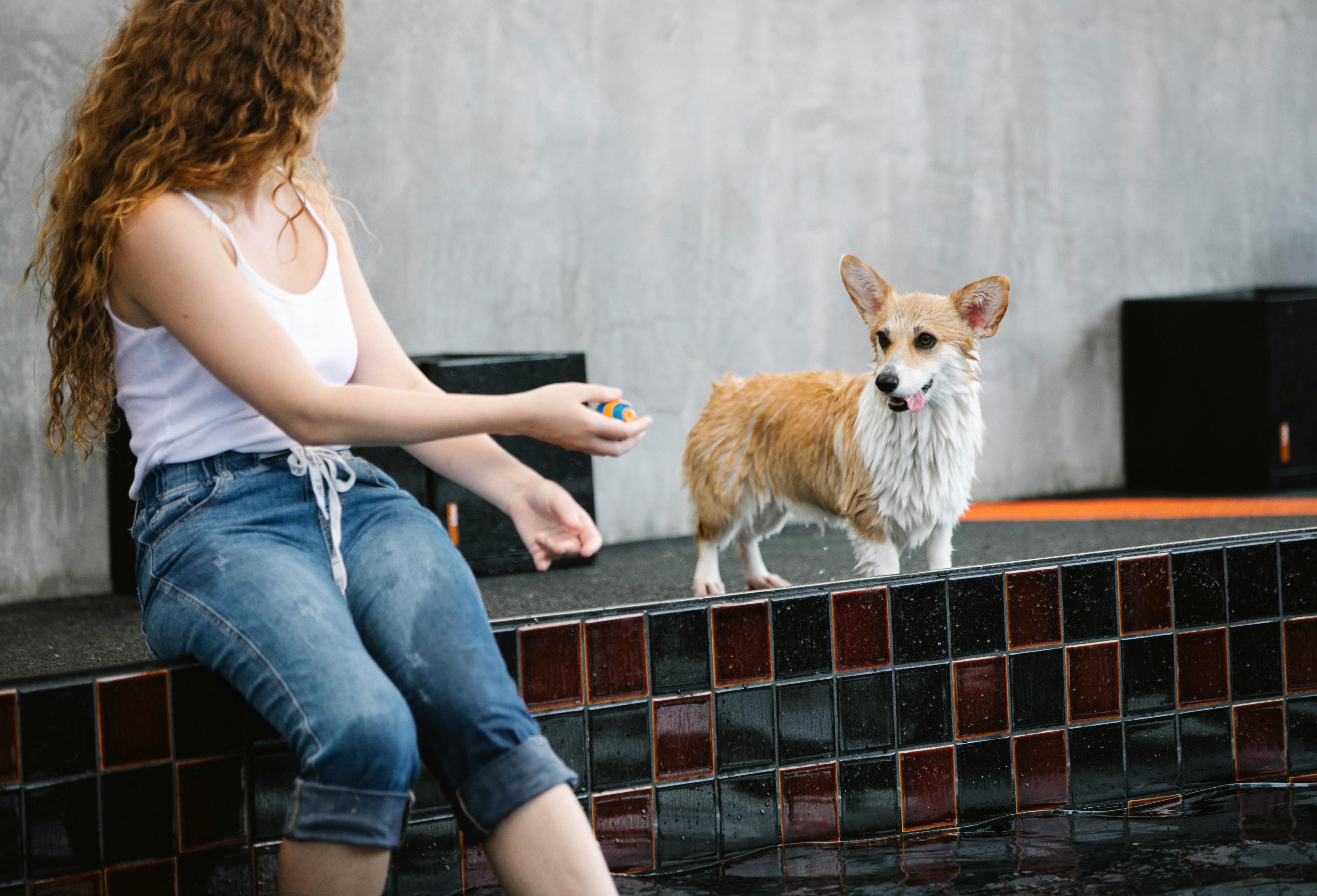
Dogs are often seen with their noses wet, and many people wonder why it is the case. It’s not just a random trait; it’s actually a fascinating aspect of their biology that plays a key role in how they interact with their environment. Understanding how a wet nose helps dogs can enlighten us about their senses and behaviors. Let’s dive into the incredible advantages of wet noses and explore why do dogs have wet noses in the first place.
The Science Behind the Wet Nose
Dogs’ noses are wet for a reason! A wet nose helps to enhance their sense of smell. The moisture on a dog’s nose helps to capture scent particles from the air, making it easier for them to detect different smells. This is especially important since dogs have a sense of smell that is 10,000 to 100,000 times more sensitive than humans.
Here are some scientific facts about dog noses:
- Scent receptors: Dogs have about 300 million scent receptors in their noses compared to about 5 million in humans.
- Moisture absorption: The wetness helps absorb scent particles, increasing their ability to smell.
- Temperature regulation: A wet nose can help regulate a dog’s body temperature, making it easier for them to cool down when it’s hot outside.
Evolutionary Advantage
The evolution of the canine species has favored dogs with wet noses. From a survival standpoint, a good sense of smell is crucial. Dogs that could smell better were more likely to find food, avoid predators, and interact effectively with their environment.
- Hunting: Wet noses help dogs track prey by following scent trails.
- Communication: Dogs communicate with each other through smells, and a wet nose can enhance this form of communication.
- Social interactions: A dog with a well-functioning nose can better understand social cues from other dogs and humans.
Historical Context
Historically, dogs have been companions to humans for thousands of years. Their ability to smell has played a key role in their domestication. Early humans relied on dogs for hunting and protection, and a wet nose was a sign of a healthy, functioning animal.
- Working dogs: Many working dogs, like police or search-and-rescue dogs, rely heavily on their sense of smell, which is aided by their wet noses.
- Therapy and service: Service dogs often use their sense of smell to detect medical conditions like seizures or low blood sugar, showcasing how vital their noses are.
Benefits of a Wet Nose for Dogs
There are several advantages of having a wet nose, and these benefits significantly impact a dog’s life. Here’s a quick list of how a wet nose aids dogs:
- Enhanced smelling ability: Captures and holds scent particles.
- Body temperature regulation: Helps cool down the body.
- Health indicator: A wet nose often indicates good health, while a dry nose can signal dehydration or illness.
Fun Facts About Dog Noses
- Dogs can sniff out diseases like cancer through scent.
- A dog’s nose print is unique, similar to a human fingerprint.
- Dogs can even detect changes in human emotions through smell.
Comparison: Wet Nose vs. Dry Nose
It’s interesting to compare wet noses to dry noses. Many people wonder if a dry nose means something is wrong with their dog. Here’s a simple comparison:
| Wet Nose | Dry Nose |
|---|---|
| Indicates hydration and health | Can indicate dehydration |
| Enhances sense of smell | Less effective at capturing scents |
| Common in healthy dogs | May signal an underlying issue |
Practical Examples
Have you ever noticed how dogs greet one another? They often sniff each other’s noses and behinds. This behavior is not just casual; it’s a crucial part of their social interaction. A wet nose allows them to gather a wealth of information about another dog, like their diet, emotional state, and even health status.
In addition, when your dog licks you with a wet nose, it’s not just a sign of affection. They are also gathering information about you! Dogs are known to be highly observant, and a wet nose helps them learn about their humans.
In the end, understanding why do dogs have wet noses provides insight into their behavior and health. It’s an incredible adaptation that helps them interact with their environment effectively. So, the next time you see your furry friend with a wet nose, remember all the amazing things it does for them!
Their wet noses are not just cute but a key part of what makes them such unique and lovable companions.
5 Myths About Dogs’ Wet Noses Debunked: What Every Pet Owner Should Know
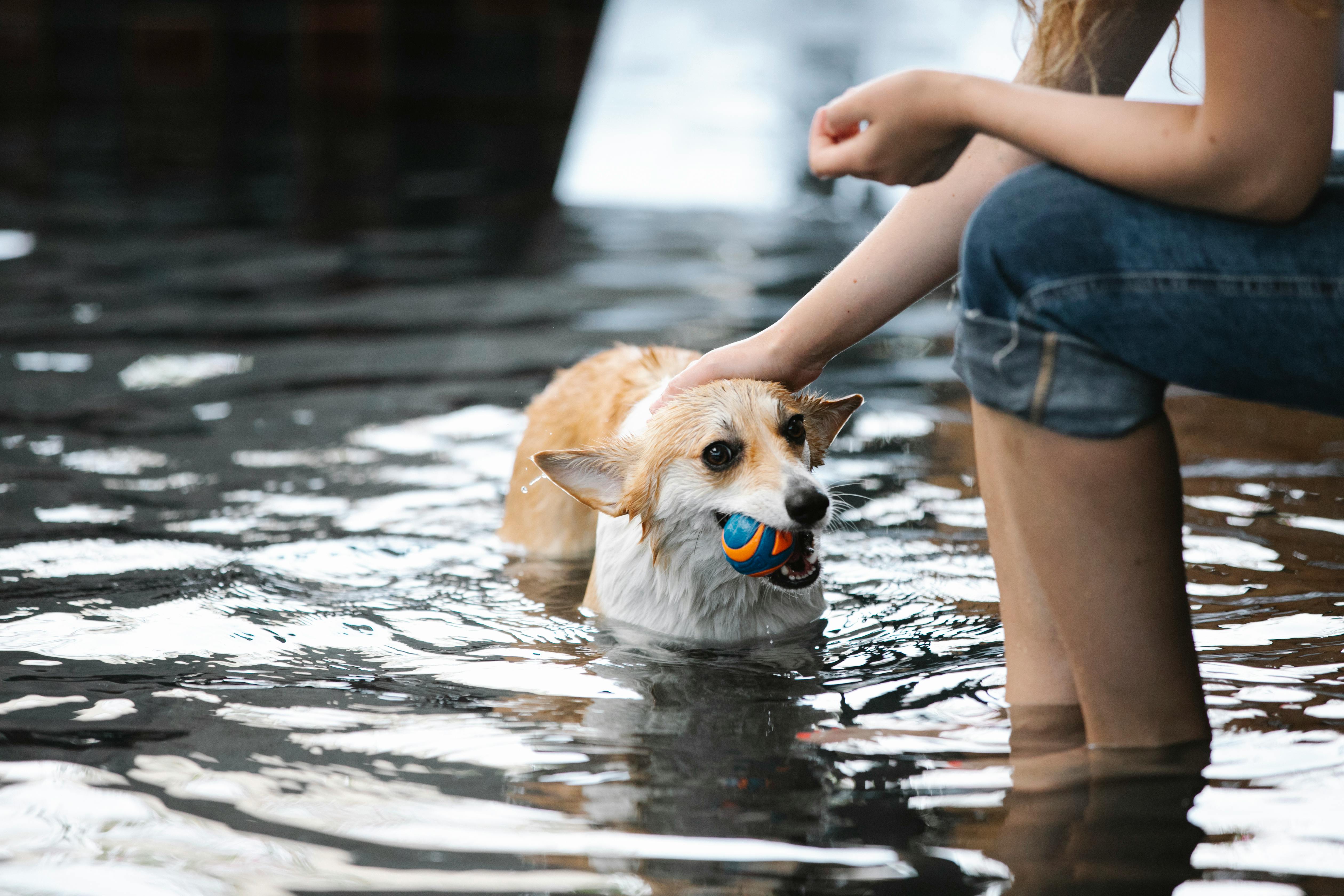
Dogs have been our companions for thousands of years, and one of their most adorable features is their wet noses. But why do dogs have wet noses anyway? This question leads to a lot of misconceptions. In this article, we will debunk some common myths surrounding dogs’ wet noses and reveal the fascinating truth behind this characteristic that every pet owner should know.
Myth #1: Wet Noses Mean a Dog is Healthy
Many people believe that a wet nose indicates that a dog is healthy. While a moist nose can be a sign of health, it isn’t always the case. Dogs can have wet noses and still be sick. Factors like humidity, temperature, and even the dog’s activity level can affect nose moisture.
- Healthy Signs: Bright eyes, active behavior, and a shiny coat.
- Sick Signs: Lethargy, loss of appetite, or unusual behavior regardless of nose moisture.
Myth #2: Dogs’ Noses are Wet Because They Lick Them
Another popular belief is that dogs’ noses stay wet because they are always licking them. This is partly true, but it’s not the whole story. While licking can contribute to the moisture, the primary reason dogs have wet noses is due to a unique glandular system. Dogs secrete mucous from their noses that helps to keep it moist.
- Licking contributes: Yes, but it’s not the main reason.
- Glandular secretions: Dogs have specialized glands that help maintain moisture.
Myth #3: A Wet Nose Indicates a Dog is Happy
Some pet owners think that a wet nose means their dog is happy. However, a dog’s emotional state is far more complex than just nose moisture. Dogs can have wet noses whether they are excited, anxious, or even scared. Observing other behaviors is critical to understanding your dog’s feelings.
- Happy signs: Wagging tails, playful behavior, and relaxed body language.
- Nervous signs: Panting, hiding, or barking, regardless of nose wetness.
Myth #4: Dogs’ Noses are Always Wet
It’s often assumed that dogs’ noses should always be wet, but that’s not true. A dog’s nose may become dry for several reasons, including warm weather, certain illnesses, and even just waking up from a nap. A dry nose isn’t always a cause for concern, but if it persists along with other symptoms, a vet check is recommended.
- Normal moisture levels: Varies according to the environment.
- When to worry: If dryness is accompanied by other health issues.
Myth #5: All Dogs Have Wet Noses
Some folks think that all dogs have wet noses, but that’s not accurate. Certain breeds, particularly those with shorter snouts or different skin types, can have drier noses. For example, bulldogs and pugs may naturally have drier noses compared to a Labrador Retriever.
- Breeds with drier noses: Bulldogs, pugs, and some terriers.
- Breeds with wetter noses: Retrievers, spaniels, and hounds.
The Science Behind Wet Noses
So, why do dogs have wet noses? The science behind it is quite interesting. Dogs possess a highly developed sense of smell, and their wet noses play a crucial role in this. The moisture helps to capture scent particles in the air, enhancing their ability to smell.
- Scent capture: Moisture captures scents, aiding in the dog’s ability to detect odors.
- Thermoregulation: Helps cool down their body, as dogs don’t sweat like humans do.
Fun Facts About Dogs’ Noses
- Unique Prints: Just like human fingerprints, every dog has a unique nose print.
- Temperature Regulation: Dogs help cool themselves through their noses, a bit like sweating.
- Keen Sense of Smell: Dogs have up to 300 million smell receptors in their noses compared to a human’s 5 million.
Practical Tips for Pet Owners
- Check Regularly: Monitor your dog’s nose regularly for changes in moisture and texture.
- Hydration Matters: Ensure your dog stays hydrated, especially in hot weather.
- Vet Visits: If you notice persistent dryness or other health issues, consult a veterinarian.
Understanding why dogs have wet noses and debunking these myths is crucial for every pet owner. It’s not just about keeping your furry friend happy, but also about ensuring their overall health and well-being. The next time you pet your dog, remember that a wet nose is more than just an adorable feature — it’s part of what makes your dog the amazing creature it is.
Can a Dog’s Nose Predict Weather Changes? Discover the Amazing Truth!

Dogs are more than just our furry friends; they seem to have some amazing abilities that often leave us in awe. One of the most intriguing questions about our canine companions is: Can a dog’s nose predict weather changes? And why do dogs have wet noses, anyway? Let’s dive into these fascinating topics, revealing some truths that many might not know but are surely interesting.
Can a Dog’s Nose Predict Weather Changes?
It’s a common belief that dogs can sense shifts in the weather, maybe even better than most humans do. Some dog owners swear that their pets can predict rain, storms, or even snow days. But how true is this?
Sensitivity to Changes: Dogs have a remarkable sense of smell, estimated to be between 10,000 to 100,000 times more acute than that of humans. Their noses can detect scents at incredibly low concentrations, which might allow them to sense changes in the environment that humans can’t.
Pressure Changes: Some scientists think that dogs can feel changes in barometric pressure. When a storm is on the horizon, the pressure drops, and a dog might react to this. Some dogs might become more anxious, while others could start to act out or seek comfort.
Smell of Rain: Dogs might also pick up on the scent of rain before it arrives. Certain compounds, like petrichor, are released from the ground when rain first falls. A dog’s wet nose could help them detect this scent from a distance.
Why Do Dogs Have Wet Noses?
The wetness of a dog’s nose isn’t just a random feature; it’s actually quite beneficial for them. Here are some reasons:
Enhanced Sense of Smell: A wet nose helps dogs absorb scent chemicals better. The moisture on their nose can capture odor molecules more effectively, enhancing their ability to smell.
Cooling Mechanism: Dogs do not sweat like humans do. Instead, they cool themselves through panting and by having a wet nose. The moisture evaporates, helping to lower their body temperature.
Health Indicator: A dog’s nose can indicate their health. A healthy dog usually has a cool, damp nose. If a dog’s nose is dry and warm, it could be a sign of illness, although not always.
Fascinating Facts About Dogs’ Noses
Understanding more about dogs’ noses can be quite revealing. Here are some interesting facts:
Unique Patterns: Just like human fingerprints, every dog has a unique nose print. Researchers could use it to identify dogs.
Nose Color Variation: A dog’s nose color can change with age or health. Puppies often have pink noses that may darken as they grow.
Nasal Turbinates: Dogs have complex structures in their noses called nasal turbinates that help filter, warm, and humidify the air they breathe, which contributes to their extraordinary sense of smell.
Comparison: Dogs’ Noses vs. Human Noses
Dogs and humans have different nose structures and functions. Check out this comparison:
| Feature | Dogs | Humans |
|---|---|---|
| Smell Sensitivity | 10,000 to 100,000 times better | Limited to basic scents |
| Nose Structure | Complex with many receptors | Simple with fewer receptors |
| Moisture Function | Aids in smelling and cooling | Mostly for temperature regulation |
Practical Examples of Dogs Sensing Weather
Many dog owners have stories about their pets predicting weather. Here are some common behaviors:
Hiding or Seeking Shelter: Dogs may hide or want to stay close to their owners when they sense a storm approaching.
Restlessness: Some dogs become restless or anxious before bad weather, pacing around the house or barking.
Increased Alertness: You might notice your dog acting more alert, sniffing the air, or watching the sky when a storm is brewing.
The belief that dogs can sense weather changes is not just a myth; there’s some science behind it. While not every dog will exhibit these behaviors, many canines show an incredible ability to react to changes in their environment, including weather shifts.
Understanding why dogs have wet noses and how this relates to their behavior can help dog owners appreciate their pets even more. Whether it’s predicting a storm or simply enjoying a sniff around the park, dogs continue to amaze us with their unique abilities and characteristics. So the next time your dog acts a little strange before a rainstorm, remember, they might just be sensing something you can’t!
Why Does Your Dog’s Nose Change: The Truth About Wetness and Dryness
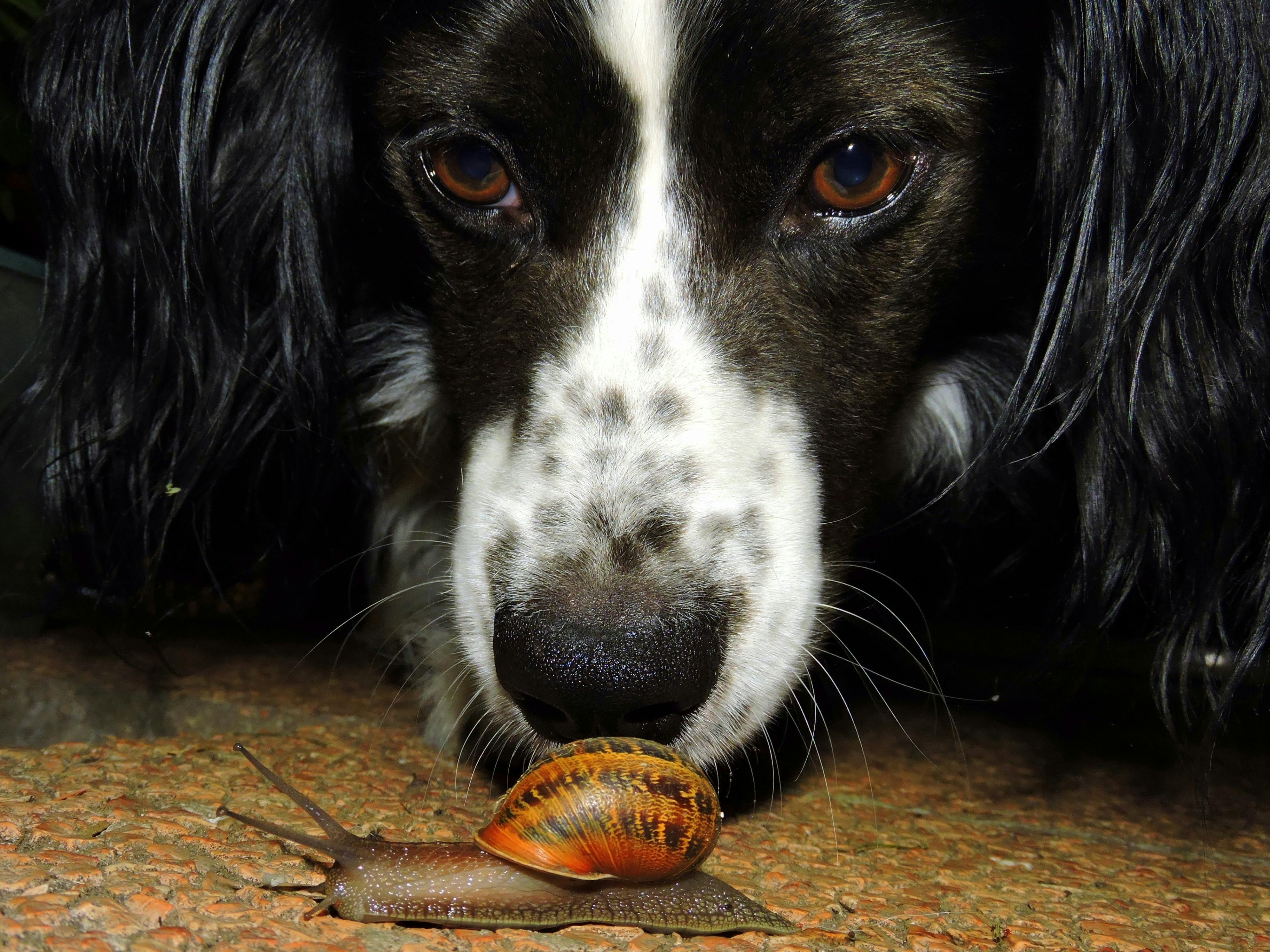
Dogs are often referred to as man’s best friend, but one of the most intriguing features about them is their noses. Ever wonder why does your dog’s nose change? What’s the deal with wetness and dryness? A dog’s nose can tell you a lot about its health and mood, but many pet owners might not know the real reasons behind these changes. Let’s dive into the fascinating world of canine noses and discover why your furry companion has that unique wet snout.
Why Do Dogs Have Wet Noses?
Dogs have wet noses for several reasons, and it’s not just to be cute. Wet noses help dogs in a few important ways:
- Sense of Smell: A wet nose helps enhance a dog’s sense of smell. The moisture traps scent particles, making it easier for dogs to pick up on different smells in their environment.
- Temperature Regulation: Just like humans sweat, dogs use their noses to help regulate their body temperature. The moisture on their noses evaporates, which can help cool them down.
- Communication: Dogs use their noses to gather information about other animals and humans. When they sniff, they collect pheromones and other scents that tell them about other creatures’ health, mood, and even their reproductive status.
Why Does Your Dog’s Nose Change?
Dogs’ noses can change from wet to dry and back again, and this can be influenced by a variety of factors. Here’s what you should know:
- Weather Conditions: Hot or dry weather can lead to a drier nose. Conversely, moisture in the air can keep it wet.
- Health Status: If a dog is sick or dehydrated, their nose might become dry. On the other hand, a healthy dog generally has a wet nose.
- Age Factors: Older dogs may experience changes in their nose moisture due to health issues or aging.
Common Reasons for a Dry Nose
A dry nose might be alarming for some dog owners. Here are a few common reasons it could happen:
- Dehydration: If your dog isn’t drinking enough water, that can lead to a dry nose.
- Allergic Reactions: Just like humans, dogs can have allergies that affect their skin and noses.
- Sunburn: Dogs can get sunburned, especially those with lighter-colored noses. This can lead to dryness and cracking.
- Infections: Nasal infections can also cause a dog’s nose to become dry and chapped.
When to See a Vet
While many changes in your dog’s nose are normal, some situations call for a visit to the vet. Look out for:
- Cracking or bleeding on the nose
- Persistent dryness that doesn’t improve
- Other symptoms like lethargy, loss of appetite, or changes in behavior
- Swelling or unusual growths on the nose
Fun Facts About Dog Noses
- Dogs have as many as 300 million scent receptors in their noses, compared to a human’s 5 million!
- A dog’s sense of smell is 40 times better than a human’s.
- The color and texture of a dog’s nose can vary greatly between breeds.
What to Do for a Dry Nose
If you notice your dog’s nose is dry, there’s several things you can try at home:
- Ensure they have constant access to fresh, clean water.
- Consider using a humidifier in your home, especially in dry climates or during winter.
- Consult your vet about possible allergies or skin conditions.
- If your dog’s nose is cracked, you might want to apply a small amount of petroleum jelly to soothe it.
Comparing Wet and Dry Noses
Here’s a quick comparison of what a wet nose versus a dry nose can indicate:
| Nose Condition | Possible Causes | Action Needed |
|---|---|---|
| Wet Nose | Healthy, hydrated dog | No action needed |
| Dry Nose | Dehydration, allergies, infections | Monitor and consult a vet |
Understanding why your dog’s nose changes can not only help you keep an eye on their health but also deepen your bond with your furry friend. Paying attention to the condition of their nose, along with other behavior and habits, can provide valuable insight into their overall well-being.
In the end, whether wet or dry, your dog’s nose is a fascinating part of their anatomy, full of surprises and important functions. So next time you pet your dog, take a moment to appreciate that snout and all it does for them!
The Connection Between a Dog’s Wet Nose and Their Sense of Smell: Insights for Pet Lovers

Have you ever noticed how a dog’s nose is always a little damp? It’s one of those things that make you go, “Why do dogs have wet noses?” For pet lovers, understanding this peculiar characteristic can be more than just fun trivia; it provides insights into canine health and their amazing sense of smell. This article will dive into the fascinating truth behind why dogs have wet noses, and how it relates to their incredible olfactory abilities.
The Science Behind a Dog’s Wet Nose
A dog’s nose is not only a cute feature, it plays a crucial role in their sensory perception. Dogs have about 220 million scent receptors in their noses, while humans only have around 5 million. This huge difference explains why dogs are so good at detecting scents. But, what does that have to do with their wet noses?
Here’s the scoop: a wet nose helps to enhance their sense of smell. When a dog’s nose is moist, it can trap more scent particles. The moisture allows these tiny particles to dissolve, making it easier for the dog to process the smells they encounter. This is why you might notice your dog sniffing everything they come across — they are gathering all the information they can!
Why is a Dog’s Nose Wet?
So, why do dogs have wet noses in the first place? Here are some key factors:
Cooling Mechanism: Dogs don’t sweat like humans do. Instead, they regulate their body temperature mainly through panting and, to some degree, through their noses. A wet nose can help them cool down as the moisture evaporates.
Sense of Smell: As mentioned, moisture on the nose helps to capture scent particles. This is essential for their survival instincts, as it allows them to find food, detect danger, and recognize other animals.
Health Indicator: A wet nose can also signal good health. Typically, a moist nose means that a dog is well-hydrated and not suffering from any illness. On the other hand, a dry or cracked nose could indicate dehydration or other health issues.
Historical Context
Dogs have been companions to humans for thousands of years, and their nose has always played a vital role. Historically, dogs were bred for specific tasks like hunting, herding, and guarding. A keen sense of smell was essential for these roles. Breeds like Bloodhounds and Beagles were specifically developed to enhance their scent-tracking abilities, and their wet noses help them in this regard.
Fun Facts About Dog Noses
- Dogs can detect certain diseases, including some cancers, thanks to their powerful sense of smell.
- The unique pattern of a dog’s nose is as distinctive as a human fingerprint. Each dog has a different nose print.
- Certain breeds, like Greyhounds, have a less moist nose compared to breeds like Bulldogs, which is often due to their body structure and skin types.
What If a Dog’s Nose is Dry?
A dog’s nose can sometimes be dry, and while it’s not always a cause for concern, it can be a sign of something else. Here are some common reasons for a dry nose:
- Dehydration: If your dog isn’t drinking enough water, their nose may become dry.
- Allergies: Environmental factors like pollen or dust can lead to dry skin, including on the nose.
- Illness: Sometimes, a dry nose can indicate a fever or other health issues.
Tips for Pet Lovers
As a pet owner, it’s crucial to monitor your dog’s nose and overall health. Here are some tips:
- Keep Them Hydrated: Always provide fresh water to keep your dog hydrated, especially in hot weather.
- Regular Vet Check-ups: Regular visits to the vet can help catch any potential health issues early.
- Observe Changes: If you notice a sudden change in your dog’s nose condition, it’s best to consult a veterinarian.
In Summary
The connection between a dog’s wet nose and their remarkable sense of smell is a fascinating aspect of canine biology. With their moist noses, dogs can explore the world in ways that humans can only imagine. Understanding why dogs have wet noses not only deepens our appreciation for these loyal companions but also helps us take better care of their health. So next time you give your furry friend a scratch behind the ears, remember that their wet nose is doing a lot more than just being cute!
How to Care for Your Dog’s Nose: Tips for Maintaining Optimal Moisture Levels
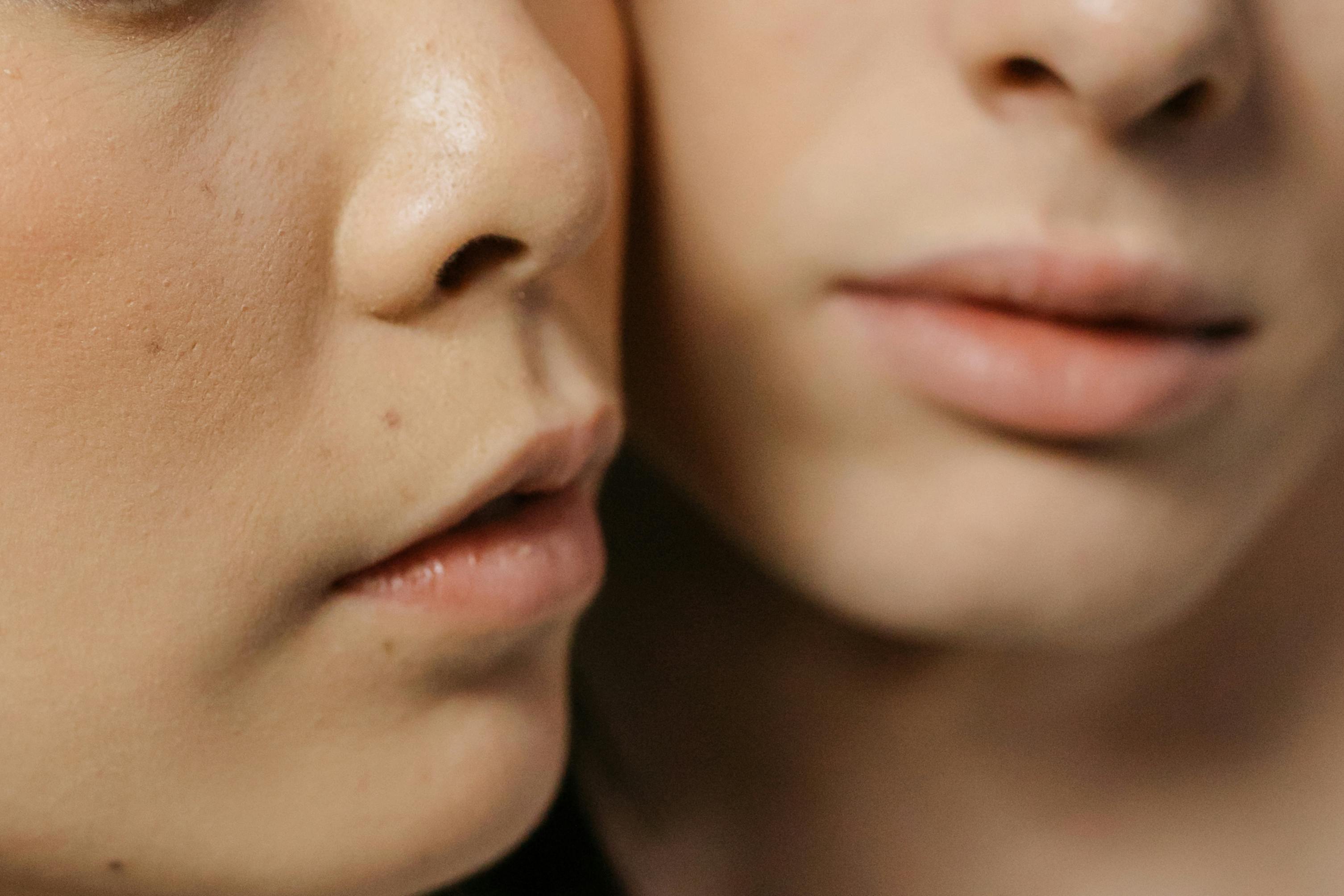
Taking care of your dog is not just about feeding them, walking them, and giving them love. There’s a whole lot more to it, like ensuring their nose stays in tip-top shape. You might be wondering, how to care for your dog’s nose? Well, keeping it moist is key! But before we dive into that, let’s explore the curious question: why do dogs have wet noses?
The Science Behind Wet Noses
Dogs noses are typically wet for some interesting reasons. Wet noses help dogs smell better because the moisture traps scent molecules, which makes it easier for them to detect smells. This is important for survival and social interactions in the canine world. It’s pretty fascinating when you think about it!
Historically, dogs with wet noses have been linked to health. If a dog’s nose is dry, it might be a sign they are sick or dehydrated. However, not every dry nose indicates a problem. Factors like weather, activity level, and even breed can play a role in how moist a dog’s nose stays.
How to Maintain Optimal Moisture Levels in Your Dog’s Nose
Keeping your dog’s nose moist is essential for their overall health. Here are some practical tips you can follow to ensure their nose remains in great condition:
Hydration is Key: Make sure your dog has access to fresh, clean water at all times. Dehydration can lead to a dry nose.
Regular Vet Check-Ups: Routine visits to the veterinarian can help catch any potential health issues early. Your vet can also provide guidance specific to your dog’s breed and age.
Humidity Matters: If you live in a dry climate, consider using a humidifier in your home. This can help keep the air moist and, in turn, keep your dog’s nose from drying out.
Avoid Excessive Sun Exposure: Just like humans, dogs can get sunburned. If your dog is outside for long periods, consider applying pet-safe sunscreen on their nose, especially if they have light-colored fur.
Inspect Regularly: Keep an eye on your dog’s nose. If you notice any cracks, sores, or discoloration, it might be time to consult your vet.
Limit Allergens: Dust, pollen, and other allergens can irritate your dog’s nose. Try to keep your house clean and minimize your dog’s exposure to potential irritants.
Fun Facts About Dogs’ Noses
Unique Patterns: Just like human fingerprints, every dog has a unique nose print. It can actually be used for identification!
Thermoregulation: Dogs use their noses to help regulate their body temperature. When they pant, the moisture on their noses helps cool them down.
Heat Sensors: Dogs can sense heat through their noses. This helps them locate warm-blooded prey or find a cozy spot to lay down.
Moisture Maintenance: What to Avoid
While it’s crucial to maintain moisture levels in your dog’s nose, there are some things you should avoid doing:
Don’t Use Human Moisturizers: Human lotions and creams can be toxic to dogs. Always use products specifically designed for pets.
Avoid Chemicals: Stay away from harsh cleaning products or sprays that may irritate your dog’s nose or skin.
Don’t Overdo It with Water: While hydration is important, don’t force your dog to drink large amounts of water in one go. It’s better to let them sip throughout the day.
The Dry Nose Dilemma: When to Seek Help
If your dog’s nose is persistently dry or cracked, it could indicate an underlying health issue. Here’s when you should seek veterinary help:
- If there’s a change in color (like turning red or darkening).
- If your dog seems to be in pain or discomfort.
- If the dryness is accompanied by other symptoms like vomiting, lethargy, or excessive thirst.
Understanding why your dog’s nose is wet and how to care for it can make a big difference in their well-being. Dogs rely on their sense of smell to communicate and interact with the world around them. By maintaining optimal moisture levels in their noses, you help them stay healthy and happy. Plus, it’s just one more way to show your furry friend that you care!
Conclusion
In summary, the wet noses of dogs serve several crucial purposes, contributing to their health and sensory capabilities. A wet nose helps enhance their sense of smell by trapping scent particles, while also playing a role in thermoregulation, allowing dogs to cool down effectively. Additionally, moisture on their noses aids in the detection of pheromones, which is essential for communication and social interaction among canines. This natural feature not only showcases the unique adaptations of dogs but also signifies their well-being. Therefore, if you notice that your dog’s nose is excessively dry or cracked, it may be a sign to consult a veterinarian. Embrace the fascinating biology of your furry friend and appreciate how their wet nose is a small yet vital aspect of their health and communication. Share this knowledge with other dog lovers, and help them understand the wonderful traits that make our canine companions so special.

